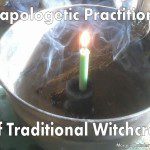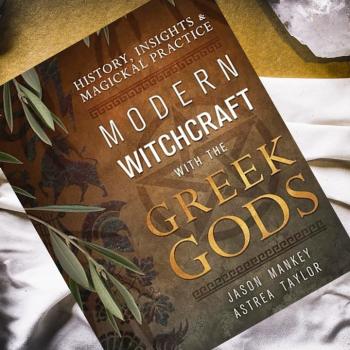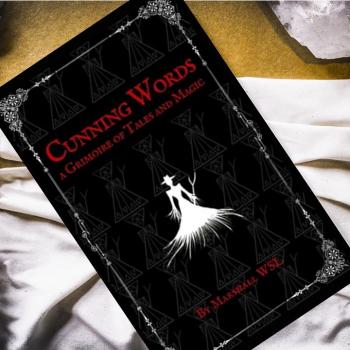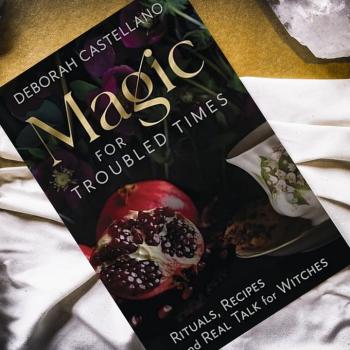What Heals the Wound?
Jean Shinoda Bolen writes, “If we are living in a spiritual wasteland of depression, despair, fears, anger, meaninglessness, emptiness, or addictions, an understanding of the [Grail] legend can teach us something about what ails us and what can heal us.” She goes on to say, “I realized that ‘what ailed me’ was directly related to what could heal me.”
In essence—part of the healing of the wound is looking into the dark mirror. We can’t heal the wound until we acknowledge we’ve been hurt. When we’ve piled on the defenses to avoid the pain of our past, that can be the hardest step. In the Twelve Step program, this is part of the beginning of the process. While I have some issues with aspects of the Twelve Step program, I absolutely agree with the concept that we can’t begin to address the problem until we acknowledge there’s a problem in the first place.
When we look at our own behavior, and when we look at what happened to us in our past that led us to that behavior, we can begin to transform. That’s part of it.
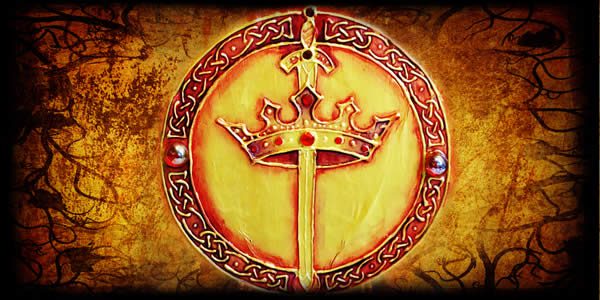
Divine Union
I also believe that there is an inherent power in the mystic union with the divine. Whether you call this God, the divine, the deep self, or by the name of a specific deity, there is something about that opening, that connecting to something larger, that is healing. If one of the side effects of wounding is a shutting off from emotion/love/grief/joy/sorrow/bliss/hope, then opening to that larger something, to those emotions, can be part of the cure.
The Grail Question
While I don’t necessarily believe that there is any mystical golden and bejeweled cup that has the power to heal us, I do believe in the power of the Grail. I look at the symbol of the dish or the cup—a vessel, just as we are vessels. And part of the power of the Grail is in the question that the Grail knight is asked, “Whom does the Grail serve?” Another version is where the Grail knight asks the appropriate question of the Grail itself, “How do I serve thee?” And still another question is when the Grail seeker asks the king, “What ails thee?”
In acknowledging the wound, we find the key to healing. In asking who the Grail serves or how we can serve the Grail, we are asking how can we serve the divine, how can we serve our community, our land, our groups. And when we offer that service in love, we are healing not only ourselves but community too.
Jean Shinoda Bolen writes, “If the ruler of the country, the ego, could be touched by the Grail and experience the spirituality of the Self…it would have the power to heal him. Synchronistically, when his wound was healed the country would recover. Joy and growth would return. The wound may symbolize the situation of ego being cut off from the Self, where the separation is a wound that never heals and causes continuous pain…”
One of my favorite authors on the Grail, John Matthews, writes in The Grail: Quest for the Eternal that “Once healed, the King is permitted to die, and the waters of the Waste Land flow again, making it flower.” I don’t believe that the king always needs to physically die. Instead, this is a death of the old self, a death of the behaviors that harmed us. Any transformation is a death. He also writes “The Grail is part of us, sets us free like the imprisoned waters which revitalized the Waste Land.”
The Grail is, at its essence, a water-bearing vessel. Changing the vessel releases the waters and allows them to flow where they are needed to heal the wound.
The concept of the ego can be thought of as a cup. A healthy ego has boundaries and holds water. An ego that has been wounded spills the water out and doesn’t allow the cup to ever fill.
The Pain of the Wounded King
I’ve written many articles about how a group member, or a leader of another group, cannot “make” a bad leader stop leading a group. We can shun them. We can speak out about their abuses and bad behavior. But unless someone has done something illegal and there is proof, each leader is indeed their own sovereign. We have no power to stop them.
However, we can provide resources for all the other leaders out there. The new leaders making their first mistakes, the long-time leaders who can’t figure out why XYZ doesn’t work in their group, the leaders who want help and are seeking it. The leaders who (like me) have looked into the mirror and realized, “I’m causing some of my own problems, but how do I fix this?”
To these leaders we can offer leadership training and techniques, including looking into the dark mirror as well as resources for healing those wounds from the past.
Here are a few things I’ve observed in my years of teaching Pagan leadership. The leaders who are causing the most problems are paradoxically the least able to recognize their own flaws, and the least likely to try to change their behavior.
On a similar vein of unfairness, those leaders who most need help are the ones who are least able to afford to bring in professional training. There are a number of reasons for this. One is that many of these are leaders who live in economically depressed areas, which also can be a factor in what kind of education they had access to.
What I’ve found is that groups with leaders who had access to more and better education seem to have less drama. This is just my own anecdotal experience, and I wish I had a team of anthropologists to unleash to gain quantitative and qualitative data on this. But what I’ve seen over and over is that groups that have the benefit of leadership training, a stable venue, and mature, educated leaders are among the more stable groups out there.
The land and the king are one. Healthy leaders create healthier groups.
Seeking the Grail and Wholeness
We don’t need to be the sovereign of a group to seek our own inner sovereignty. We don’t have to lead a group to find the leader within ourselves, or to seek inner wholeness. We all have wounds, and we all are wounded kings. We all have behaviors that are unintentionally harmful to ourselves and to those around us.
John Matthews writes, “No matter what form the quest took, the objective remained the same; a spiritual goal representing inner wholeness, union with the divine, self-fulfillment.”
He also writes, “This, surely, is the reason for the quest – this desire to penetrate the Grail of one’s own being. If the answer lies in some private inner mystery, the reason for the quest becomes a need to identify the inner being with the desired goal. He who achieves the Grail is the one who succeeds in healing both a psychospiritual wound and the death-struck kingdom of the Grail King. The cup is a vessel of compassion, signifying wholeness.”
What is wholeness and healing?Some healing can come simply from opening up to that larger divine. Some healing can come from a process of therapy. Some healing can come just from being loved and being touched. Those who are loved and accepted often find healing for those old wounds of rejection. In fact, the simple agency of physical touch—of being held and comforted and accepted physically—can have a beneficial effect.
More than anything, though, I believe that the quest for wholeness is served by exploring ourselves. First, looking into that dark mirror, but then also looking at what we do well. What are our gifts and talents? What are our dreams? What are the ways that we bring love out into the world? Answering these questions requires our own individual journey.
Walking the Labyrinth
Jill Purce writes in The Mystic Spiral: Journey of the Soul that“The spiral tendency within each one of us is the longing for and growth towards wholeness. Every whole is cyclic, and has a beginning, a middle and an end. It starts from a point, expands and differentiates, contracts and disappears into the point once more.” I so often think of the journey of the Grail quest, the pilgrimage path that follows a labyrinth or spiral into the center and back out again.
I look at this process as the core of most of the rituals I facilitate. I believe that if I can help people crack open their hearts to that larger divine, or their deepest self…really, whatever they call it isn’t important to me. I’m there to help people open up to that something beyond that has healing and transformative properties. That connection is like the Grail itself—it pours those waters of grace, of love, of connection into our hearts.
Wholeness is healing from the wounds of our past, but it’s also looking at our future. It’s asking the question, what do I serve? And how can I serve the Grail, that larger divine? How can I serve my community and the world around me?
The land and the king are one. What can we—each one of us—do to make ourselves and our communities healthier?
[First Published in Eternal Haunted Summer Winter 2015]
Resources:
- Emma Jung and Marie-Louise von Franz, The Grail Legend
- Jean Shinoda Bolen, M.D., Crossing to Avalon: A Woman’s Midlife Quest for the Sacred Feminine
- Jill Purce, The Mystic Spiral: Journey of the Soul
- John Matthews, The Grail: Quest for the Eternal
- Wikipedia: Pages on Narcissistic Personality Disorder and other Personality Disorders

Patheos Pagan on Facebook.
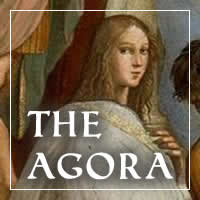
the Agora on Facebook
Seeking the Grail is published on monthly on the third Monday. Subscribe via RSS or e-mail!
Please use the links to the right to keep on top of activities here on the Agora as well as across the entire Patheos Pagan channel.



